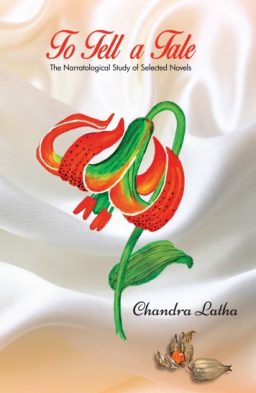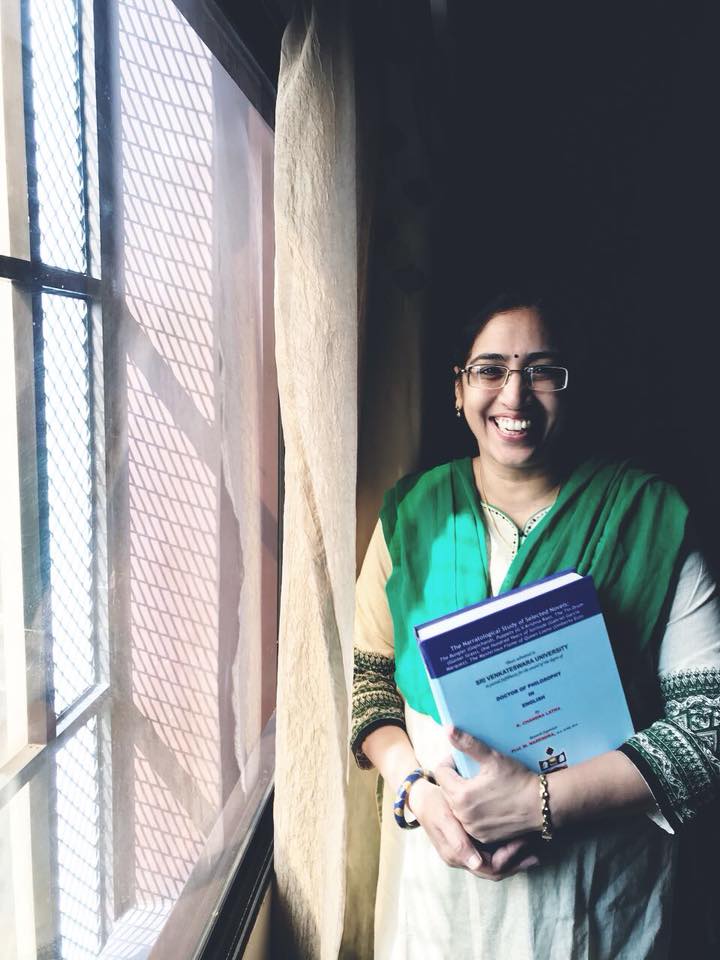
To tell a tale-14
(Chapter-2 Part-7)
-Chandra Latha
Gopichand avows, “Expression of life is the ultimate attraction. Any defined literary form is a fixed frame. Literary forms are born to express the life. Why should we give more validity than that? If we can get more benefit by moving beyond those frames, Why shouldn’t we move the frame?” Gopichand (chitta jallu.) He also points out, “Few critics consider life as a text book of multiple tables. Life is never that simple and straight for me.” Lack of fixed narrative frames or rigid narrative norms make this novel post-structuralist narrative also. Gopichand writes, “As I am talking about having framelessness, don’t assume that I am supporting the idea of introducing vivid incidents haphazardly into the frameless writing. These writings will not have frame, but will have a methodological thought structure. That methodology will have a destination. That method will not succumb ideal, but enlightens the psyche and presents life in its broad spectrum and decor.” (Gopichand. Gopichand : Rachanaa sarvaswamu, 10 volumes, Alakananda Prachuranalu, 2010. Foreword.)
The Bungler, is a brilliant narrative montage that got manifested on the paper.
Works Cited:
Primary Sources
- Gopichand, The Bungler : A journey through life .Translation by DS Rao, Srishti Publishers, 2003.
- Gopichand, Asamarthuni jeeva yaathra, (Telugu), Visalandhra Publishing house.
Secondary Sources
- Gopichand : Hetuvaadamu -sahaja jnaanamu , Postu cheyani uttaraalu.
- Gopichand : Rachanaa sarvaswamu, 10 volumes, Alakananda Prachuranalu, 2010.
- Gopichand : Cinema Rachanalu, Alakananda Prachuranalu, 2010.
- Gopichand : Tatwavettalu, Alakananda Prachuranalu, 2010.
- Jampala Uma Maheswara Rao (Sahavasi): Gopichand asamarthuni jeeva yaathra , noorella Telugu navala, Perspective Publications ,2007.
- Koduri,Srirama Murthy. Telugulo konni prasiddha mano visleshana navalaalu, asamarthuni jeeva yathra, Telugu sahithyamlo manovishleshana, Telugu, Visalandhra Publishing House, 2001.
- Vegunta,Mohana Prasad. Asamarthuni jeeva yathra, sata vasantha sahithee manjeeraalu , 2002, Andrha Pradesh library association.
- K.N. Panikkar, Colonisation, Culture and Resistance, Oxford University Press, 2007.
- M.M. Bhaktin, The dialogical Imagination, University of Texas Press,1981.
- Ayyappa Panicar, Indian Nrratology, Sterling Publishers Pvt Ltd,2003.
Online Sources :
- Gopichand. Documentary Part 1 https://www.youtube.com/watch?v=YRq12T_rXZk
- Gopichand. Documentary Part 2 https://www.youtube.com/watch?v=h7tNA_nd4tM
- Gopichand Documentary Part 3 https://www.youtube.com/watch?v=smHmlBZNBgA
- The bard of Telugu literature http://www.thehindu.com/features/friday-review/history-and-culture/bard-of-telugu-literature/article2476171.ece
- Russel, Bertard.Can men be rational? Sceptical Essays. George Allen & Unwin Ltd.1928.Pg.33
- Stream of consciousness http://literarydevices.net/stream-of-consciousness/
- Interior monologue http://grammar.about.com/od/il/g/Interior-Monologue.htm
- Stream of consciousness vs. interior monologue http://www.enotes.com/ homework-help/stream-consciousness-different-from-interior-297876
- Psycho narrative http://hartzog.org/j/narrativewriting3.html
- Ricoeur,Paul. Quoted Monologue/ Narrated Monologue. Time and Narrative, Volume 2. Translated by Kathleen McLaughlin and David Pellauer. University of Chicago Press. 1986. Pg154
- https://en.wikipedia.org/wiki/Stream_of_consciousness_(narrative_mode)
- Benjamin, Walter (1936) The Work of Art in the Age of Mechanical Reproductionhttps://www.marxists.org/reference/subject/philosophy/works/ge/benjamin.htm
- Retchless, Brian Why Editing Works BC: Art and Visual Perception, Fall 2006 by http://www1.icsi.berkeley.edu/~stellayu/artvis/project/filmedit/index. html
- Diegetic http://filmsound.org/terminology/diegetic.htm
- http://www.goodreads.com/author/show/6820652.Tripuraneni_Gopichand
- Sources : https://en.wikipedia.org/wiki/Tripuraneni_Gopichand
- Machavaram,Madhav.http://eemaata.com/em/issues/200811/1364.html అసమర్థుని జీవయాత్రేనా?
- Maddipati, Krishna Rao. http://eemaata.com/em/issues/201003/1543.html అసమర్ధుని జీవయాత్రే! http://www1.icsi.berkeley.edu/~stellayu/artvis/project/filmedit/index.html
- https://en.wikipedia.org/wiki/The_Interpretation_of_Dreams
- http://dreamhawk.com/dream-encyclopedia/alfred-adler-1870-1937
- Lancer’s rule : http://www.uni-koeln.de/~ame02/pppn.htm
- Page 20. (http://literarydevices.net/stream-of-consciousness/)
- Page 21 . (http://grammar.about.com/od/il/g/Interior-Monologue.htm)
- Hühn,Peter.Kiefer,Jens. Lanser’s Rule: Page no: 140, The Narratological Analysis of Lyric Poetry: Studies in English Poetry from 16th to 20th century.
- Benjamin, Walter .The Work of Art in the age of mechanical Reproduction by Theory of the Novel, A Historical Approach Edited by Michael McKeon, The John Hopkins University Press, Baltimore and London, 2000.
- Cohen, Keith. Film and Fiction, Theory of the Novel, A Historical Approach Edited by Michael McKeon, The John Hopkins University Press, Baltimore and London, 2000.
*****
(Contd..)

Chandra Latha, writer from Nellore won Telugu Association of North America award in 1997 for the novel “Regadi vittulu”. Her other novels are Vardhani(1995) and Vallu veellu paarijaataalu (2011). Her short fiction includes nearly 80 stories compiled in nenu nanna navutha (1996),Idam shareeram (2003) and vivarnam(2007). Her non-fiction are (Fish can fly!) ”vacche daretu(2010), itanala kadaku eeboothi boTlu(2010). And also published her blogposts in a book madata pejee(2010).
